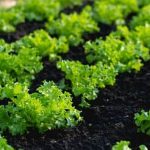Are you interested in starting your own deck garden vegetable? Planting a deck garden can be a rewarding experience, allowing you to grow your own fresh vegetables in a limited space. In this article, we will explore the benefits of deck gardens for growing vegetables and provide tips and guidance on how to create a successful and thriving deck garden.
Deck gardens offer the perfect solution for individuals with limited outdoor space or those who live in urban areas. Whether you have a small balcony or a compact patio, you can still enjoy the pleasures of gardening and produce your own healthy vegetables right at home. By utilizing containers and pots, you can easily transform your deck into a lush garden filled with an array of delicious vegetables.
With the right knowledge and techniques, you can create a bountiful harvest of fresh, organic vegetables, all from the convenience of your own deck. From selecting the right vegetables to proper soil preparation and pest control, this article will provide valuable insights into creating a successful and thriving deck garden vegetable. So let’s get started on this exciting journey into the world of deck gardening.
Selecting the Right Vegetables for Your Deck Garden
When it comes to selecting the right vegetables for your deck garden, there are a few factors to consider. First, think about the size of your containers and the amount of space you have available on your deck. Some vegetables, such as tomatoes and peppers, require larger pots due to their deep root systems, while others like lettuce or herbs can thrive in smaller containers. Consider the mature size of each plant before making your selections.
Another important consideration is the climate and sunlight exposure on your deck. If your deck gets limited sunlight throughout the day, opt for vegetables that can tolerate partial shade, such as leafy greens or root vegetables. On the other hand, if your deck receives ample sunlight, you can grow a wider variety of sun-loving vegetables like tomatoes, cucumbers, and zucchini.
Finally, think about which vegetables you and your family enjoy eating. There’s no point in growing a vegetable that no one likes. Consider what you use most frequently in your cooking and prioritize those vegetables for your deck garden. This way, you’ll not only enjoy the process of growing them but also be able to savor the fruits of your labor once they’re ready to harvest.
When selecting the right vegetables for your deck garden, keep in mind how much space they will need to grow, the amount of sunlight they require, and which ones you and your family enjoy eating. By taking these factors into consideration, you can ensure a successful and bountiful harvest from your deck vegetable garden.
- Tomatoes (cherry or patio varieties are great for small spaces)
- Lettuce (perfect for smaller containers and partial shade)
- Peppers (choose compact varieties suitable for container gardening)
- Cucumbers (look for bush or dwarf varieties)
- Herbs (basil, parsley, mint – great for adding flavor to dishes)
Container Options for Deck Gardens
When it comes to choosing the right pots and containers for your deck garden, there are several factors to consider in order to ensure the success of your vegetable plants. The first consideration is the size of the container. Make sure that it is large enough to accommodate the root system of the vegetables you want to grow. For example, tomatoes and peppers require larger pots, while smaller herbs can thrive in smaller containers.
Another important factor to consider is drainage. Proper drainage is crucial for the health of your vegetable plants. Look for containers with drainage holes at the bottom to prevent waterlogged soil, which can lead to root rot. If your chosen container does not have drainage holes, you can drill them yourself or use a layer of gravel at the bottom before adding soil.
The material of the pot or container is also an important consideration. Terra cotta and ceramic pots are popular choices as they are porous and allow air exchange, but they tend to dry out more quickly. Plastic containers are lightweight and retain moisture well, making them a good option for heat-loving vegetables like peppers and eggplants. Additionally, wooden containers can be a stylish and durable choice for deck gardens.
Properly choosing pots and containers for your deck garden is essential in ensuring that your vegetable plants have adequate space to grow, proper drainage, and suitable materials for healthy growth.
| Factor | Consideration |
|---|---|
| Size | Accommodate root system |
| Drainage | Prevent waterlogged soil |
| Material | Terra cotta, plastic, ceramic, or wood options |
Soil and Fertilizer
A crucial aspect of preparing your deck garden for vegetable growth is the soil and fertilizer you use. The right combination can make a significant difference in the health and yield of your vegetables. When it comes to soil, it’s important to select a high-quality potting mix that is well-draining and nutrient-rich. Look for mixes that are specifically formulated for vegetable gardens, as they will have the right balance of ingredients to support healthy plant growth.
In addition to using a good potting mix, incorporating organic matter such as compost into your soil can further improve its structure and fertility. Compost provides essential nutrients for your plants and helps retain moisture in the soil, which is especially important for container gardening. You can either purchase compost or create your own using kitchen scraps and yard waste.
When it comes to fertilizing your deck garden vegetables, using a balanced slow-release fertilizer can help provide the necessary nutrients over an extended period. Be sure to follow the instructions on the fertilizer package to avoid overfeeding your plants, which can harm them. Additionally, consider using organic fertilizers to promote healthy soil ecosystems while providing essential nutrients to your vegetables.
| Soil Type | Fertilizer Type |
|---|---|
| Well-draining potting mix | Balanced slow-release fertilizer |
| Organic matter/compost | Organic fertilizers |
Watering Techniques for Deck Gardens
When it comes to maintaining a successful deck garden vegetable, proper watering techniques are crucial to ensure the health and growth of your plants. With the limited space and soil in deck gardens, it’s important to pay close attention to the hydration needs of your vegetables. Here are some tips for ensuring proper hydration for your deck garden vegetables:
- Choose the right containers: Select pots and containers with adequate drainage to prevent waterlogging, which can lead to root rot.
- Check the moisture levels: Use a soil moisture meter to regularly check the moisture levels in the soil. Vegetables in deck gardens may require more frequent watering due to their confined space.
- Watering schedule: Establish a consistent watering schedule, ideally in the morning or evening when temperatures are cooler to reduce evaporation.
In addition to these tips, it’s important to understand the specific watering needs of different vegetable plants in your deck garden. Some vegetables may require more water than others, so be sure to research the individual needs of each plant and adjust your watering routine accordingly.
Proper hydration is essential for the success of your deck garden vegetable. By implementing these watering techniques and maintaining a watchful eye on your plants, you can ensure that they will thrive and produce an abundance of fresh, delicious vegetables for you to enjoy.
Sunlight and Placement
When it comes to growing vegetables in a deck garden, one of the most important factors for success is maximizing sunlight and proper placement for your plants. The amount of sunlight your deck garden receives can ultimately determine the health and productivity of your vegetable crops. Here are some tips for maximizing the sun’s rays for a successful deck vegetable garden.
Understanding Sunlight Needs
Different vegetable plants have varying sunlight requirements. Before you start planting, it’s important to understand the sunlight needs of the vegetables you want to grow. Leafy greens like lettuce and spinach can thrive in partial shade, while tomatoes, peppers, and cucumbers require at least 6-8 hours of direct sunlight each day. Be sure to consider the sunlight needs of each vegetable when planning the layout of your deck garden.
Optimizing Placement
When deciding where to place your containers on your deck or patio, pay attention to the path of the sun throughout the day. Consider positioning taller plants on the northern side of your deck or balcony so they don’t shade smaller plants as the sun moves across the sky. If space allows, consider using rolling plant stands or casters under larger containers so you can easily move them throughout the day to track the sun.
Utilizing Reflective Surfaces
Consider utilizing reflective surfaces such as white walls, mirrors, or even aluminum foil around your deck garden area to help bounce additional sunlight onto your vegetable plants. This can be especially helpful if you have limited direct sunlight on your deck or balcony.
By understanding the specific sunlight needs of your chosen vegetables and strategically planning their placement on your deck or balcony, you can maximize their exposure to sunlight and set yourself up for a successful vegetable harvest.
Pest Control and Disease Prevention
Natural Methods
One of the best ways to keep pests away from your deck garden vegetables is by using natural pest prevention methods. This can include companion planting, where certain plants are grown next to each other to repel pests, and using natural predators such as ladybugs or praying mantises to control insect populations.
Organic Pesticides
If natural methods aren’t enough to keep pests at bay, consider using organic pesticides. These pesticides are derived from natural sources and are less harmful to the environment and beneficial insects than traditional chemical pesticides. Additionally, they are safe for consumption on vegetable plants.
Good Air Circulation
Proper air circulation around your deck garden vegetable plants can help prevent diseases such as powdery mildew and blight. Make sure your containers are not overcrowded and allow for adequate airflow between plants.
Sanitation
Regularly clean up any fallen leaves or debris around your deck garden area. This can help prevent the spread of diseases that may be present in the soil or on infected plant material.
By implementing these pest control and disease prevention methods, you can ensure that your deck garden vegetables remain healthy and thriving throughout the growing season. Taking proactive steps to protect your plants from pests and diseases will ultimately lead to a bountiful harvest of fresh, delicious vegetables for you to enjoy.
Harvesting and Enjoying the Fruits of Your Labor
In conclusion, cultivating a successful deck garden for growing vegetables can be a rewarding and fulfilling experience. By selecting the right vegetables, choosing the appropriate containers, preparing the soil, and ensuring proper hydration and sunlight, you can create a thriving deck garden that yields bountiful produce. Additionally, implementing effective pest control measures and disease prevention strategies will help maintain the health and vitality of your vegetable plants.
Once your vegetables have reached maturity, it’s time to reap the rewards of your hard work. Harvesting your deck garden vegetables can be an exciting time as you gather fresh and nutritious produce right from your own home. It is important to harvest at the right time to ensure optimal flavor and quality.
Depending on the type of vegetable, different harvesting techniques may be required. For example, leafy greens can be harvested by simply picking individual leaves as needed, while root vegetables should be gently dug out of the soil to avoid damage.
As you enjoy the fruits of your labor, take pride in knowing that you have successfully nurtured and cultivated a thriving deck garden full of delicious vegetables. Whether you savor them fresh from the vine or incorporate them into mouth-watering recipes, homegrown vegetables from your deck garden are sure to delight your taste buds and provide nourishment for both body and soul. Congratulations on a successful deck garden vegetable harvest.

If you’re looking to get into vegetable gardening, or are just looking for some tips on how to make your current garden better, then you’ve come to the right place! My name is Ethel and I have been gardening for years. In this blog, I’m going to share with you some of my best tips on how to create a successful vegetable garden.





